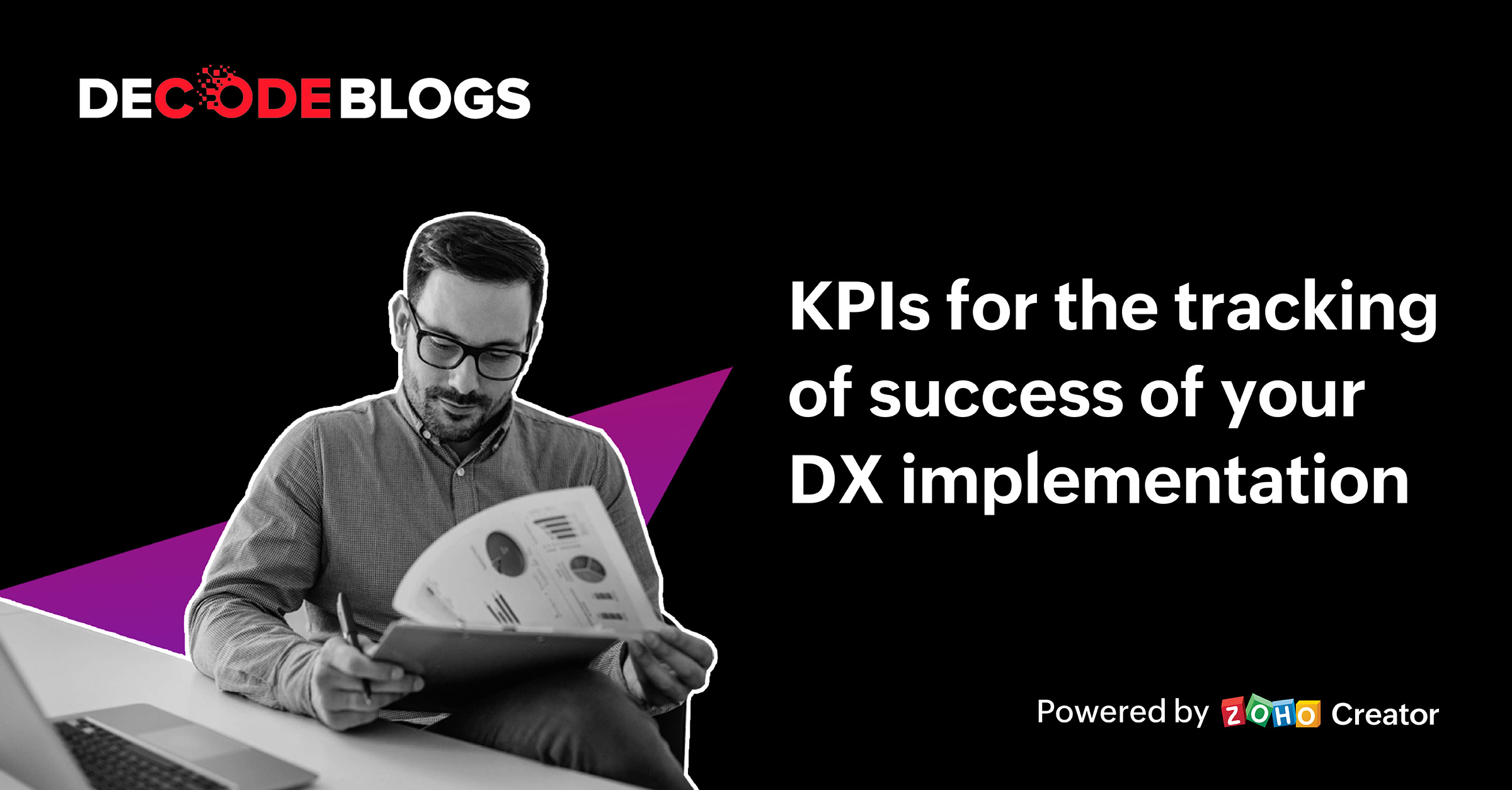- HOME
- Know Your Tech
- Metrics to track the success of your DX implementation
Metrics to track the success of your DX implementation
- Last Updated : April 20, 2023
- 641 Views
- 5 Min Read

Digital transformation is likely to change your business more than you ever could have imagined. And while broad strategic goals like growing revenue or improving brand awareness may be driving your DX project, in order to really judge its success you'll need to dig into the data.
So how do you separate the signal from the noise? First, you need to decide (in advance) what metrics you will use to determine the progress of the project. Even though software lets you measure almost anything, that doesn't mean you need to be measuring everything.
Choose 2-3 major goals or markers of success for your digital transformation, and focus your attention on the KPIs that speak to those goals. Most importantly, communicate which metrics you're following to everyone in the business; employees will better know what to prioritize when making decisions about budgeting, hiring, and resource allocation.
KPIs can get as granular or as broad as needed. Let's take a look at some that might be useful for you, depending on the goals you are trying to reach.
Adoption across your company
No digital transformation project can be successful if people aren't using the new tools; by tracking usage across the organization, you'll be able to see which departments have embraced the implementation, and which ones are hesitant. If you can understand the cause behind both, you can evangelize or educate as needed.
Aside from adoption, you can measure how much of the software's functionality is being used, and by which teams. For example, if the Support team has started using the new technology, but only in a very limited way, you can create material that emphasizes the benefits of what's being left on the table, so to speak.
Another way to track adoption is by looking at changes in employee efficiency; this will tell you if people are using the software. If there has been widespread adoption but all of the processes still take the same amount of time, you'll know that new workflows aren't really being deployed.
Time saved by employees
One of the great things about DX is the ways it frees employees to do more strategic work. And while it may not be immediately obvious how to measure something like "big picture" thinking, there are several KPIs that can speak to this.
A simple metric is to look at how much time is being saved as a result of the DX. Keep an eye on the number of tasks getting completed, and in what time frame. By tracking the kinds of tasks your teams are completing, you can also gauge the amount of proactive versus reactive work people are doing.
For instance, if the volume of support tickets is going down, you'll know that your new chatbots and customer forums are having a big impact. Or if data entry tasks are now done through workflows rather than by hand, you'll see your sales teams' outbound call volume go up.
The pace of innovation
Change in innovation is a great metric to follow, and can be broken down into a number of specifics. One straightforward number to watch is the speed to market for new products and services, something that good DX can really improve. Perhaps teams that once worked in silos are now able to collaborate, or approval processing time has been cut in half due to changes in project management methodology.
You might also consider the number of new products that are being delivered, and how much they contribute to revenue. Or look at the ability to enter into new markets and the deployment of new methods or business strategies. These metrics can help you better understand how much innovation your DX project is facilitating.
Revenue per employee
Revenue per employee is likely a metric you already track, or at least have a general sense of. If not, this is one that can give you a lot of insight into where you should invest more (or less) resources. Updates in technology can streamline processes that result in major cost savings; when the IT team no longer has to chase people down about updating their installed software, they can focus their attention on building custom apps to improve routine procedures.
Another key benefit of DX is the opportunity it gives your business to expand into new digital channels. By comparing the cost of marketing to the revenue derived from these channels you'll get a clear picture of the impact such changes are having on your bottom (and top) line. For instance, going digital usually lowers CAC and decreases churn; if you see either of these numbers change for the better, you'll know your getting the bang for the buck from your DX.
Customer Experience
With good DX comes good data; by watching metrics around the customer experience you'll see the tangible benefits brought about by the transformation. In other words, if the CX is changing for the better, the DX is doing its job.
You might dig into engagement stats at each touchpoint; you'll be able to identify the culprit behind drop-offs and tweak the customer journey to reduce friction. And by following the conversion rate of new digital touchpoints, and monitoring exactly what is driving traffic to your site (and the revenue derived from that traffic), you'll get insights into what is resonating with your audience.
While reliable standards like CSAT and NPS surveys can immediately show the pulse of the customer, when combined with data about ease of use (customer effort score) or customer health, you can uncover ways to improve your offerings to meet the needs of your audience.
Amount of engagement
Perhaps your goal is to increase customer engagement, or you just want to expand awareness of your brand generally. In either case, you might closely follow social media metrics: look at the channels with the highest participation; watch for @mentions; understand why a post generates a lot of interaction. By deeply parsing the data available, you'll be able to make better decisions about where to focus marketing spend, or what kind of online training people are looking for.
For brand awareness, you will want to dig into what is driving traffic to your website, and if those visitors are successfully converting. If you see an increase in organic traffic following your DX, you'll know that your marketing team is sending the right message. And by making use of precise visitor breakdowns, you'll be able to serve personalized experiences that are exactly what your audience is hungry for.
Digging in
Of course, there are loads of additional KPIs to track depending on the goals of the DX. Whether it's employee experience, deployment of AI and automations, or sustainability, it is surprisingly easy to measure things that seem a bit nebulous.
DX looks a lot of different ways, but failed digital transformations almost always result from the same thing: lack of communication. When everyone understands the larger organizational priorities, everyone can act in service of those goals. But first, they need to know what those goals are. Get specific; pinpoint the 3 metrics you will use to measure success, and communicate those to all employees. When change is going on everywhere around you, your attention can be drawn in a million different directions; pre-defined KPIs can help keep everyone's eye on the ball.
 Emily Sloan-Pace
Emily Sloan-PaceSince 2015, Emily has served as Zoho's Professor in Residence, creating content marketing and brand-level storytelling. Emily has also worked extensively on continuing education programs for Zoho Employees. In her previous life, Emily taught Shakespeare to audiences ranging from students in college to inmates in prison. She holds graduate degrees in both Literature and the Humanities.



